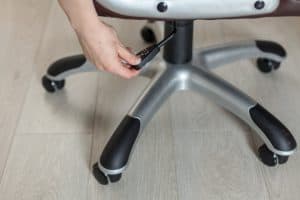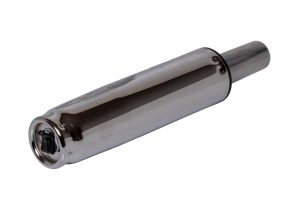If you’re working long hours, sitting still, and looking at a computer screen all day, you may be experiencing or are susceptible to a slew of issues regarding your physical form or posture. Working is already a stressful activity by itself, and our bodies have to endure the added physical stress of staying immobile and hunched over all day. It’s no wonder chronic back pain is so common among office workers.
Even if you don’t have any chronic symptoms or conditions, your chair still has to be comfortable enough to sit in it throughout the day. You don’t want to have orthopedic problems in the future, and no one can blame you for that! Besides, you need to be able to concentrate on your work. How are you going to maintain your focus and be productive if you’re not sitting comfortably?
If you’re unable to replace your chair at the moment and want to make it bearable to sit on, or if you’re simply looking for a way to get more out of it, you’ve come to the right place. In our post today, we’ll be sharing our tips on how to make an office chair more comfortable, as well as teaching you how to make a chair more ergonomic.

5 Ways to Make Office Chairs More Comfortable
As we explained above, your office chair plays a significant role in your physical health and work productivity. To combat posture problems, or at least reduce the long-term effects of sitting constantly, you need a good quality, ergonomic office chair. Not only can an ergonomic chair help with chronic back pain and posture problems and reduce the effects of sitting all day, but it can also help with focusing better.
Here, we have some tips on how you can make your chair more comfortable easily so that you can get the most out of it.
Adjusting the Recline
Imagine you’re at a showroom, shopping for chairs. What is the first thing you do to test out the comfort level of the chair? You sit in it, and you lay back. This is because it’s comforting to lay back, and it’s as close as we can get to our sleeping position in our office chairs. However, there’s more to this than just human instinct.
The reclined position is not just comfortable, but it’s actually better for your health too! The reclined sitting position is closer to standing, and it allows for better circulation. Additionally, it puts less stress on your hips and spine by activating your leg muscles as well. If the back of your chair is sitting too upright, you may want to recline it back a bit.
Just be careful not to recline it too far back. A good rule of thumb is adjusting the recline so that you’re sitting at a 135-degree angle, which puts the least amount of stress on your spine.
Adjusting the Height
When you start working at a new office or have a new chair to sit on, you might start using it as-is, as long as the chair isn’t sitting at a dramatically high or low height. As the comfort of your chair can be greatly affected by the height setting, you might benefit from readjusting the height of your chair to your own height.
If your feet are not touching the ground when you sit, you may be susceptible to developing chronic pain in your ankles, calves, and toes. Sit with your knees bent at a 90-degree angle, and adjust the height until your feet are flat and touching the ground in this position. If your chair is any lower, you may be tempted to tuck one leg under you as you sit, which can lead to imbalances in your posture and circulatory problems in your legs and feet.
Alternatively, you can get a height-adjustable desk, which allows you to adjust the height to your liking, and you may even find it enjoyable to work standing up. If you’re curious, you can check out our recent post where we reviewed a great standing desk model that’s height adjustable.
Adding Lumbar Support
Another good idea to make your chair more comfortable is to add lumbar support. The lumbar region is your lower back, and this region needs extra support to keep your spine properly aligned while you’re sitting.
If your chair doesn’t have lumbar support, you can get a lumbar pillow that’s similar to the ones gaming chairs usually include. If your chair already has adjustable lumbar support, you can readjust it to optimize it to your lower back.
To place the lumbar support properly, we can refer to the anatomically correct sitting position. Here’s how it goes:
Stick your hips out to the back, and place your buttocks deep into the seat as you’re sitting down. While sitting upright, place the lumbar pillow/support right into the gap between your lower back and the back of the seat. This will make sure that you’re always sitting in an upright position with your hips staying active to support your spine
Adding a Seat Cushion
This may seem like an obvious idea, but if you’re uncomfortable in your chair, adding extra padding or cushioning to the seat just might do the trick!
When looking for a good seat cushion, there are a few things you need to look out for. A good seat should be able to distribute your body weight evenly. It should be firm enough to support your hips, but it shouldn’t be too soft either. This may sound counterintuitive, as softness is usually held one and the same as comfort, but not in this case.
It may feel tricky to figure out, but there’s an easy way to know what is too soft. If the seat of the chair is so soft that you immediately want to relax your whole upper body and slouch down as soon as you sit, it won’t be enough to give your body the support it needs.
Additionally, if the problem is not with the seat, you may want to consider replacing the armrest pads in your chair. It may not seem like a big deal, but replacing your armrest pads can really add to your comfort. You can even find gel-infused ones that can keep your arms cool while providing an extra comfortable surface!
Raising Your Desk
If you’ve tried our tips in the above paragraphs and made the necessary changes to your chair but are still not satisfied with the results, we have another solution that just might do the trick.
The discomfort you’re experiencing when you sit down might be completely unrelated to your chair. If your desk is sitting too high or too low, no matter how much you fiddle with the settings of your chair, you’re going to have an uncomfortable time.
If your desk is too high, as we explained above, you can simply set your chair to the highest setting and see if that solves your problem. Consider adding a footrest under your feet if they’re not touching the ground. If that doesn’t do the trick, you can add inexpensive seat padding or cushions, as we mentioned. If your desk is too low, however, that’s another story.
There are a number of methods you can try to raise your desk. These include:
- Replacing the desk legs,
- Using a desktop riser,
- Using wood pieces under the legs, and
- Installing bun feet.
If you want to learn more about these methods and how to apply them, you can check out our post on how to raise a desk .
Conclusion
In our post today, we have listed our best tips on how to make a desk chair more comfortable. As you see, there are several ways you can approach this problem. The solution can be as simple as adjusting the height of your desk and the recline angle, and you can start enjoying a more comfortable chair immediately.
Another option is to buy additional supplies. Add-ons such as seat cushions, lumbar pillows, or armrest pads are all affordable items that can instantly transform your chair.
If you’ve tried everything and are still unsatisfied, you might consider getting a new office chair. If that’s what you’re after, you can head over to our recent buying guide, where we have picked and reviewed six of the most comfortable office chairs currently on the market.





